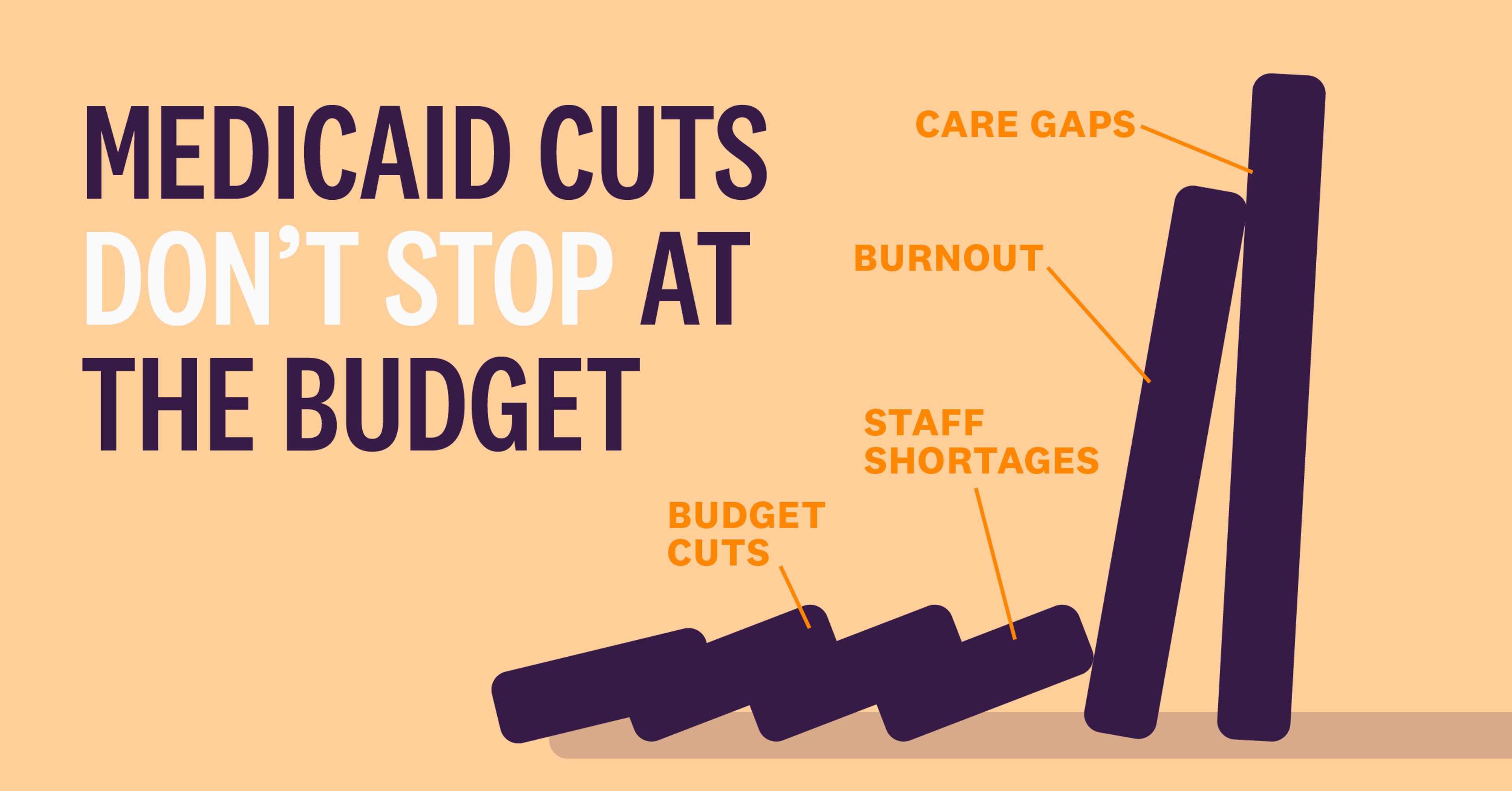From Budget Cuts to Burnout: Why Medicaid’s Crisis Is a Workforce Wake-Up Call

How hospitals can turn uncertainty into opportunity with smarter recruitment strategies
Hospitals across the country are bracing for the largest proposed Medicaid cuts in decades—up to $800 billion over 10 years (or 29% of state-financed Medicaid spending per resident).
But this isn’t just a budget issue. It’s a ticking time bomb for care access, operational resilience, and workforce stability.
If state governments can’t close the gap—potentially $88 billion more annually—health systems will face impossible choices: cut staff, reduce services, or scramble to fill critical roles with fewer resources. And without a strategic response, turnover will rise, care gaps will widen, and teams already stretched thin may break.
What’s at Risk
Medicaid isn’t just a program—it’s a lifeline. For millions of patients. And for the hospitals that serve them.
If current proposals move forward, states could be forced to:
- Raise taxes
- Slash spending on education or infrastructure
- Reduce Medicaid coverage itself.
Here’s who could be affected:
- 3 million seniors and disabled individuals
- 14 million low-income adults
- 22 million children
If a state spends $5,000 per Medicaid enrollee, a 29% cut would remove $1,450 in funding per patient. That means fewer covered services, delayed preventative care, higher out-of-pocket costs, and—inevitably—worse outcomes for patients and mounting pressure on hospitals.
How Cuts Impact Hospital Operations
Cuts like this don’t just hurt coverage—they erode entire systems.
- Uncompensated Care Surges: Patients still show up, but hospitals are left footing the bill.
- Safety-Net Hospitals in Crisis: Rural and public hospitals—already on the edge—may close doors, delay upgrades, or eliminate programs entirely.
- This rural Louisiana hospital, for example, recently completed major renovations with plans to cover costs using Medicaid reimbursements. If the funding disappears, they may default.
- Staffing Reductions & Burnout: Hiring freezes and layoffs become the default. And the talent that stays? They’re overworked and overwhelmed.
- Widening Service Gaps: Some hospitals will stop accepting new Medicaid patients altogether.
The result: burnout rises, morale drops, and continuity of care disappears.
The Smart Shift: Retention-Driven Recruitment
Yes, budgets are tightening. But the answer isn’t to pull back on recruitment—it’s to rethink it.Many hospitals are still relying on short-term fixes like sign-on bonuses to fill clinical roles like:
- CRNAs
- Rad Techs
- PTs
- Behavioral health staff
But the math doesn’t work.
A $10,000 sign-on bonus typically yields just $2,800 in value after taxes and attrition. That’s a -72% ROI.
Instead of throwing money at sign-on bonuses (that don’t last), forward-thinking hospitals like Northwestern Medicine, Boston Children’s, Memorial Sloan Kettering, and Trinity Health are moving from reactive hiring to proactive workforce planning.
Their strategy:
- Offer student loan repayment tied to 3+ year job commitments.
- Engage talent before graduation, not after burnout sets in.
- Invest in stability, not just staffing.
👉 Example: One of the largest health systems in Georgia filled 130% of its CRNA applicant goal within 20 days of launching with Clasp.
What Hospitals Should Do Now
Medicaid cuts are real—and the impact will ripple across every department, from finance to HR to patient care. But with the right strategy, you can protect your pipeline and your budget.
- Shift from reactive hiring to proactive, ROI-driven workforce planning
- Replace expensive short-term incentives
- Invest in early engagement + long-term retention
Now’s the time to act—not react.
Want to see what this could look like at your system?
Schedule time here to talk about your hiring goals and how we can help fund your future workforce.